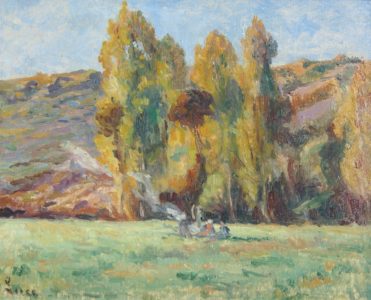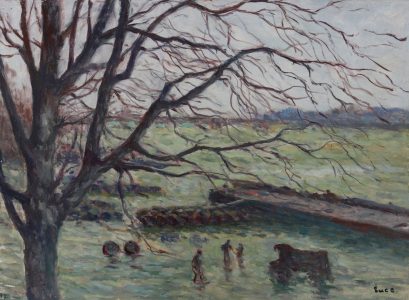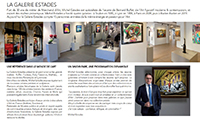
WHAT MICHEL ESTADES SAYS:
A passionate art dealer with 30 years’ expertise, Michel Estades loves sharing his knowledge and enthusiasm for his favourite artists. His 4 galleries permanently exhibit many 20th and 21st-century figurative artists, including the world’s greatest masters, masters from the Provencal and Lyon schools, modern and contemporary masters and a constant flow of talented new painters and sculptors.
BIOGRAPHY:
In 1886, the art critic Félix Feneon, under Seurat supervision, wrote on the pointillist principle and the distribution of hue. The Neo-Impressionist movement was born twelve years after photographer NADAR befriended the Impressionists.
Maximilien LUCE exhibited for the first time in 1887 at the Salon des Indépendants. He adopted Seurat’s technique and helped draft the Pointillists’ principles in the following years.
He was followed by some young painters of the time, Paul Signac, Charles Angrand, Henri Edmond Cross, and Théo Van Rysselberghe. The oldest, Angrand, was 33 years old in 1887, the youngest, Signac, only 24. Luce organized them in an ephemeral avant-garde in the ever-shifting world of painting at the time.
Little by little, Maximilien abandoned Pointillism to return to a more “classical” form of impressionism, even if the Pointillist’s division principle remained perceptible in his works, in a sporadic way, until the 1910s.
His work revolved around two main themes: landscapes, especially the banks of the Seine as he lived for a long time in Rolleboise, and numerous depictions of working-class life. Luce always tended to highlight the physical suffering of the most humble workers and the simple soldiers he painted during the First World War.
Only he could bring out so well the torment of the soldiers on their way back from combat or of the docker on the quays of Bercy.
One cannot help but make a connection between his pictorial engagement and Zola in literature. The critic Gérald Schurr considered that his political opinions and his past as an anarchist had long been detrimental to his reputation.
Major collectors were not misled, having long welcomed Luce in their selection of Neo-Impressionist work. The best example is the Grammont collection, which originated the Musée de l’Annonciade in St-Tropez.
Generous, enthusiastic, and idealist, Maximilien Luce replaced his friend Signac as president of the “Independent Artists” in 1935. A few months before his death in February 1941, he resigned to protest a ban on Jewish artists. It is a striking summary of this man’s life, made of sensitivity and commitment.
MUSEUMS AND COLLECTIONS
Works by Maximilien LUCE are in the most significant collections worldwide, notably in the United States where the painting “The Bay of the Canoubiers” (1896), sold for 918,000 FF in New York in 1986,
In Europe, many museums exhibit one or more of his works, in particular :
The Museum of the Annunciation in St-Tropez. (Former Grammont collection)
The Rath Museum in Geneva.
The Galliera Museum in Paris.
The National Museum of Modern Art in Paris.
Guy AVRAMO Oil 38 x 55 cm
WILDENSTEIN Certificate
See the work of Grand Masters exhibited at the Estades Gallery






